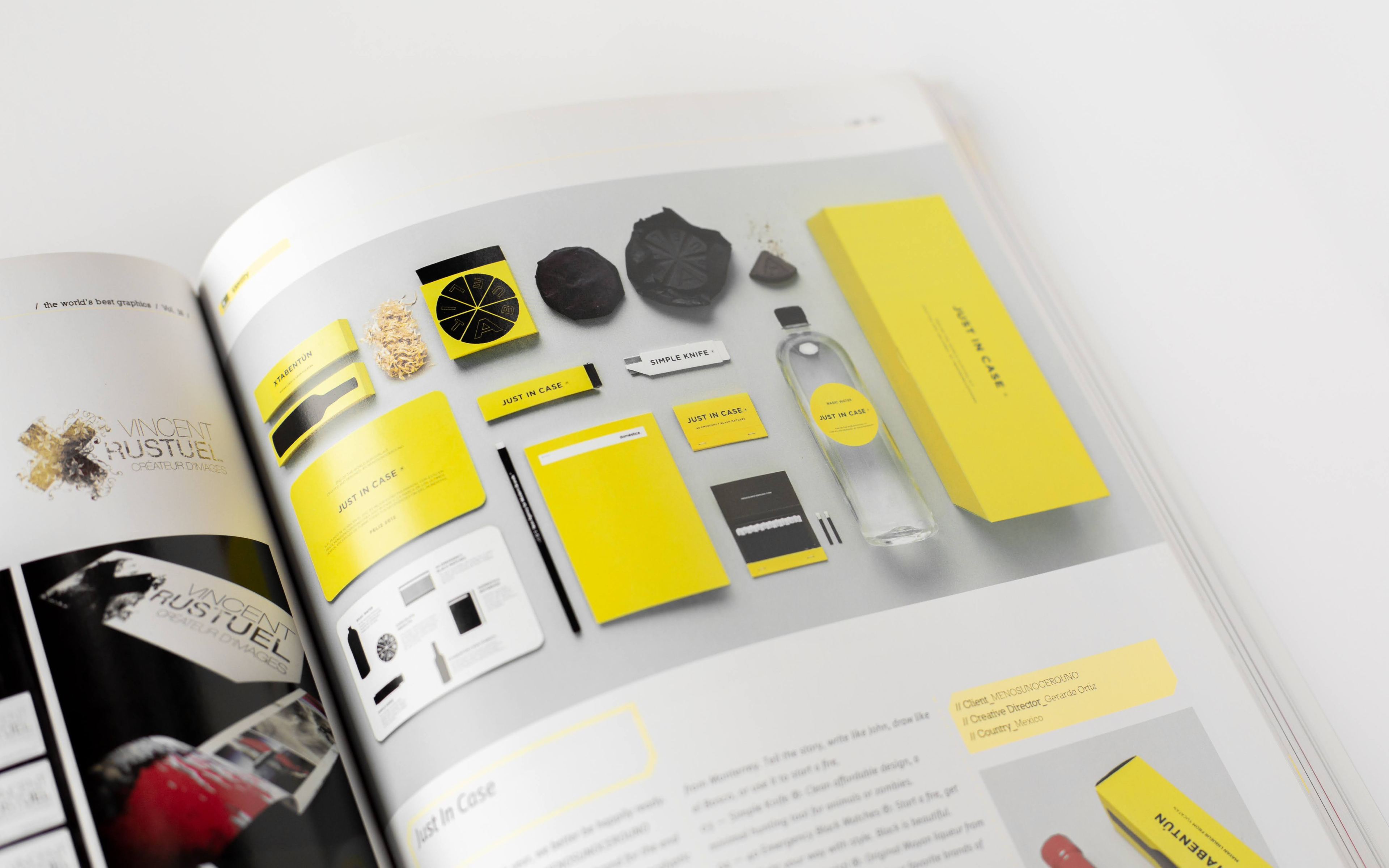Brand Identity: How to Create One in 5 Steps

One of the key elements that can either make or break a company's success is its brand identity. Your brand identity is the face of your business, the first impression that draws customers in, and the lasting image that keeps them coming back.
In this article, we'll explore the concept of brand identity, its historical evolution, why brand identity matters, and the essential elements of a good brand. We’ll also share a step-by-step guide to help you create a compelling brand identity for your business.
What Is a Brand Identity?
Brand identity is the visible and tangible elements of a brand that serve to distinguish it in consumers' minds. These elements include:
- Name
- Logo
- Color palette
- Typography
- Other visual components
Brand identity also includes the language, tone, and messaging used in marketing materials. In essence, it's the personality of your brand that shapes how consumers perceive and interact with your business.
Brand Identity vs. Brand Image vs. Brand Identity
While brand identity encompasses the intentional stylistic elements crafted by a company, such as logo and color choices, brand image refers to how these elements are perceived by the public. The brand itself is everything about the company — from its products and pricing to its mission, values, and customer interactions.
History of Brand Identity
To find the roots of the concept of brand identity, you have to go back centuries. Since ancient times, symbols, marks, and heraldic crests have been used to distinguish products, guilds, and even entire nations.
However, the modern practice of corporate identity design began to take shape during the Industrial Revolution. As more and more products began to be manufactured in factories, manufacturers needed a way to differentiate their goods from those of competitors.
This led to the creation of advertisements with mascots, jingles, and other marketing techniques. Today, many companies claim to have the oldest trademarked brands, such as Twinings Tea, Stella Artois, and Levi Strauss.
The Importance of Brand Identity
A well-crafted brand identity offers numerous benefits to businesses:
- Standing Out: In a crowded marketplace, a distinct brand identity helps your business stand out and be recognized among the competition.
- Building Trust: Consistency in branding and messaging builds trust with your audience. When consumers encounter a familiar brand identity, they are more likely to trust the business and engage with it.
- Attraction and Retention: A compelling brand identity attracts customers and encourages them to stick around.
- Maintaining Consistency: Prioritizing brand identity ensures that your business maintains a consistent image and message across all interactions, be it through advertising, products, or customer service.
What Makes a Good Brand?
There are several key branding elements to keep in mind. First, defining your company's mission and core values is crucial. It's important to identify your "why" — the underlying reasons and beliefs that drive your business.
Next, establishing your brand's personality is essential. Think of your brand as if it were a person and define the characteristics that would best describe it. This personality will be a critical component of your brand identity.
Additionally, think about your brand's unique positioning. This will determine how your brand distinguishes itself from the competition. What sets your brand apart in the market?
Finally, to build a successful brand identity, you need to gain a clear understanding of your target market and their preferences. Knowing who your ideal customers are and becoming familiar with their needs and desires will significantly inform your brand identity creation process.
The 5 Steps to Create a Brand Identity
Here are five essential steps that outline how to create a brand identity:
Creating a strong brand identity is a multifaceted process that can be broken down into several key steps. These steps provide a structured framework for developing a brand identity that resonates with your audience and sets you apart from the competition.
Step 1: Know Who You Are
Before you delve too far into brand identity, consider conducting a SWOT analysis, which will help you assess your business's Strengths, Weaknesses, Opportunities, and Threats. This analysis provides valuable insights into both your internal and external business environment.
After you’ve completed a SWOT analysis, it’s time to define your mission and core values. This involves clarifying the fundamental purpose of your business and the principles that guide its operations. Understanding your "why" is essential for crafting a brand identity that aligns with your core beliefs.
Next, establish clear goals for your business. What do you aspire to achieve as a company, and how does your brand identity support these objectives? Your brand identity should be a strategic tool that helps you reach your desired milestones.
The personality and tone of your brand are also integral components. Imagine your brand as a person — how would it communicate with your audience? Is it friendly, professional, quirky, or something entirely different? Defining this personality will shape the way you interact with your customers.
Identifying your unique positioning in the market is also crucial. What sets your brand apart from competitors, and how can your brand identity reflect those distinctive features? This differentiation will be a key driver in attracting and retaining customers.
Lastly, understanding your target market is fundamental. Who are your ideal customers? What are their preferences, behaviors, and pain points? Gaining these insights allows you to tailor your brand identity to connect with your target audience more effectively.
Step 2: Brand Identity Design
Brand identity design is the visual aesthetic of your brand identity. It encompasses a range of elements that contribute to your brand's visual language.
One of the most critical elements in this step is selecting typography that aligns with your brand's personality. The fonts you choose convey specific messages and emotions to your audience.
Developing a color palette is another crucial aspect of brand design. Different colors evoke different emotions and responses, so your palette should resonate with your brand's message. Your choice of colors should not be arbitrary — it should be intentional and aligned with your brand's identity.
Also, consider the form and shape of your design elements. The shapes and visual components you use in your branding should be consistent with your desired brand image. This visual cohesiveness contributes to a more memorable brand identity.
Step 3: Brand Identity Elements
This step involves designing the marketing materials that will define your brand's identity.
The first of these elements is a memorable logo. Your logo should reflect your brand's values and be easy for your audience to remember and recognize. It serves as the visual anchor for your brand.
Developing a user-friendly website that conveys your brand's essence is also essential. Your website frequently serves as the initial point of contact with your customers, making it one of the most significant touchpoints for your brand identity. It should align seamlessly with your brand's visual language.
You should also ensure that your product packaging aligns with your brand's visual elements. Whether you sell products in-store or online, your packaging should reflect your brand's personality, reinforcing the connection between your products and your identity.
Additionally, it’s vital to keep your business cards, templates, email designs, and social media graphics consistent with your brand identity. These elements should all be in harmony with your brand's visual language to create a cohesive and recognizable brand presence.
Step 4: Brand Strategy and Goals
Your brand strategy outlines how your brand identity supports your overall business goals. Developing a comprehensive brand strategy requires you to define the objectives of your brand identity efforts to ensure they are aligned with your business's overarching mission and vision.
When developing your brand strategy, setting specific, measurable, achievable, relevant, and time-bound (SMART) goals is crucial. SMART goals allow you to track the effectiveness of your brand identity efforts and measure your progress towards achieving your business objectives.
Step 5: Create Your Branding Guide
Once your brand identity elements are in place, it's essential to compile a comprehensive brand style guide. This guide encourages consistency in branding across all customer touchpoints, ensuring that your brand image remains cohesive.
The branding guide should include guidelines on logo usage, color codes, typography, messaging tone, and any other essential elements of your brand identity. It serves as a reference for anyone creating content or materials on behalf of your brand.
The Best Brand Identity Examples
Let's explore some successful companies that have demonstrated how to build a brand that gets great results:
1. Fenty Beauty
Rihanna's beauty line has distinguished itself with high-quality products, glamorous packaging, and a focus on inclusivity. The brand's bold and fun personality shines through in its visual identity, making it easily memorable for consumers.
2. Slack
Slack has created a brand that stands out in the B2B market by being friendly and engaging. The use of casual messaging, a calming interface, and a colorful logo all contribute to its unique brand identity.
3. Apple
Apple is known for its minimalist, clean, and innovative brand identity. The sleek design of its products, the iconic Apple logo, and the inspiring messaging all help to create a strong and instantly recognizable brand identity.
4. Mailchimp
Mailchimp's brand identity reflects its dedication to simplicity and creativity. The logo, mascot, and the use of playful language all contribute to a brand that's easy to remember and fun to engage with.
Build Your Brand Identity With Help From the Experts
Creating a brand with a strong brand identity is a dynamic process that requires ongoing effort. It’s not easy to stay abreast of changing market conditions, evolving audience preferences, and emerging design trends. However, the consistency and recognition you build through a strong brand identity will ultimately be a driving force behind your business's success. Remember, your brand identity is not just about aesthetics — it's about telling a compelling story that resonates with your audience and builds lasting connections.
Need help building your startup’s brand identity? Learn how to apply these tips to maximum effect with the help of a seasoned branding expert.







